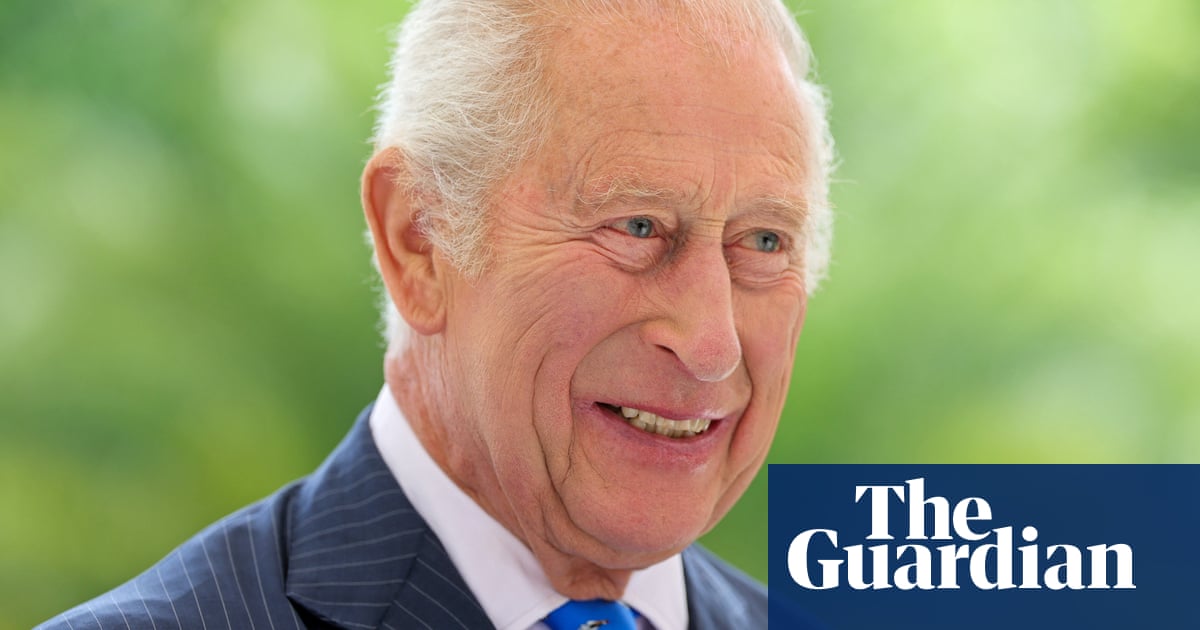King Charles is set to receive official annual income of £132m next year, after hisportfolio of land and propertymade more than £1bn in profits thanks to a boom in the offshore wind sector.
Profits at the crown estate – which partly funds the monarchy – were flat at £1.1bn in its financial year to the end of March but more than double their level two years ago, at £442.6m.
The crown estate, as the legal owner of the seabed around England, Wales and Northern Ireland, is responsible for auctioning offshore wind rights. It has benefited from the huge growth in the industry, demanding hefty option fees from renewable energy developers to secure areas of the seabed to build their windfarms.
The monarchy receives 12% of crown estate profits to fund its work, as well as the 10-year £369m renovation of Buckingham Palace. This fee was lowered from 25% in 2023 to offset the rise in profits from offshore wind projects.
According to the new calculation, King Charles is poised to receive official income of £132m from the estate,at the same level as last year. The grant had remained flat at £86.3m for the four years prior.
Dan Labbad, the chief executive of the crown estate, said the increase in profits in the past two years was a “short-term” phenomenon. “We expect this year to be the high point of these returns … before profits normalise,” he said.
Michael Stevens, the king’s Keeper of the Privy Purse, said last year the expected significant increase in the sovereign grant would be used to fund the final stages of the renovation of Buckingham Palace. Once this is accomplished, he said “a reduction in the absolute amount of the sovereign grant will be sought as part of the royal trustees review in 2026-27, through primary legislation”, to ensure that the work of the royal family “continues to be funded at an appropriate level”.
Overall the crown estate, which also includes a portfolio ofLondonproperties and rural real estate, is now worth £15bn, down from £15.5bn last year. The valuation for the marine part of the business dropped by £1bn this year to £3.4bn.
The property assets in London were valued at £7.1bn, compared with £6.9bn the year before. Much of its portfolio in the capital is concentrated around Regent Street and St James’s, and includes Victory House, home to London’s oldest Indian restaurant, Veeraswamy.
The crown estate also said it was redeveloping about 93,000 sq metres (1m sq ft) of commercial space in London as part of a £490m pipeline, via a partnership with Westminster city council to transform Regent Street, Haymarket and Piccadilly Circus.
Sign up toBusiness Today
Get set for the working day – we'll point you to all the business news and analysis you need every morning
after newsletter promotion
In May, the crown estate agreed to a 50/50 conditional joint venture with the construction company Lendlease in a project that could build up to 26,000 homes and create 100,000 jobs. Overall, the estate thinks it can build up to 56,000 new homes across its portfolio, with planning applications already under way for more than 5,000.
ANational Audit Office report last yearrevealed that the Buckingham Palace renovation project had been well managed but structural damage and the discovery of asbestos, which led to cost increases, “could have been foreseen”.
